By: Dakota Parks and Kelly Oden
Across America, healthcare workers have been on the frontline of the fight against the COVID-19 virus—working day and night on 10 to 12-hour shifts. According to the Center for Disease Control and Prevention (CDC), healthcare is the fastest-growing sector of the U.S. economy, employing over 18 million workers. Healthcare workers are also at the highest risk of any industry sector for occupational injury and illness. As of April 15, around 9,000 U.S. health workers have contracted COVID-19.
Many workers have taken extreme measures to protect themselves and their families from contracting the virus: staying in hotel rooms, isolating themselves to sections of their house away from their family or even sending their children away to stay with relatives.
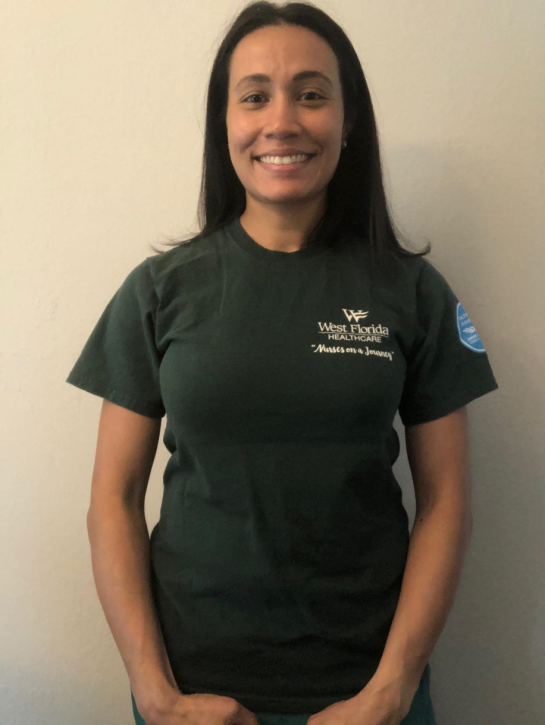
For Sheralyn Echevarria, RN at West Florida Hospital Perdido Bay ER her days end with changing clothes in the garage, keeping her shoes out of the house and cleaning both her and her husband’s uniforms daily in a Lysol laundry detergent sanitizer. As a prior Air Force medic and nurse at West Florida Hospital for two years, Echevarria explained that she stays positive by seeing the community support for healthcare workers and the camaraderie of teamwork between her coworkers and hospital staff.
“I absolutely love working in healthcare. I just feel that I was put on this Earth to help others, to help them heal and to help families. It’s just my passion to be a part of someone’s healing process—it’s my calling,” said Echevarria.
Nurses and doctors have responded to this calling of healthcare by travelling to hot-spot states like New York that needed an influx of workers. Those working in their primary hospitals and clinics have adapted their daily lives to treat patients and minimize the spread of the virus. Here in Pensacola, employees have worked around the clock following CDC guidelines, changing protocol, implementing new research information and innovating new testing facilities and personal protective equipment (PPE) sterilization procedures.
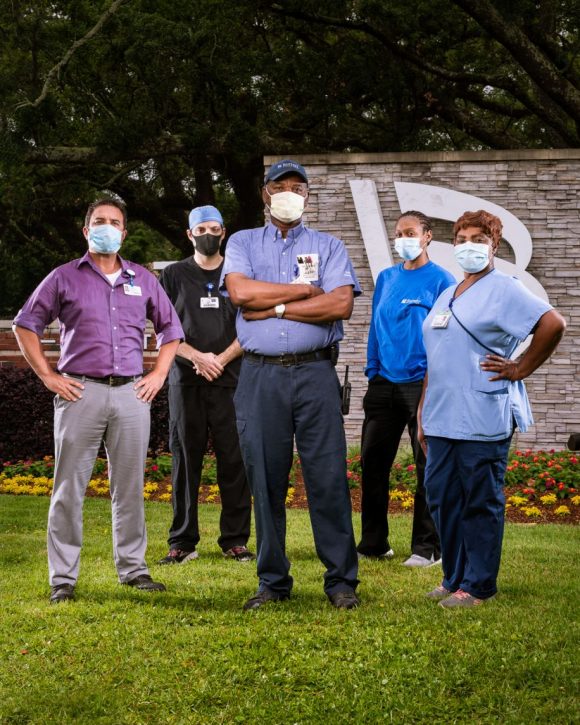
Our three local hospitals: Baptist Health Care, Ascension Medical Group Sacred Heart and West Florida Hospital have been leading the fight to minimize community spread.
On March 16, Ascension Medical Group Sacred Heart pioneered and opened the first regional drive-through testing center for COVID-19, which continues to provide a no-contact, limited exposure method for testing by allowing patients to remain in their vehicles. Each hospital was quick to deploy a no visitation policy with screenings at entrance doors and innovative ways for families to connect with loved ones being treated at the hospital via Facetime, Zoom and other video chat tools.
While the medical community has poured its heart into treating patients and keeping the community healthy in the wake of COVID-19, the community has responded with an outpour of support for healthcare workers. From sending thank you cards to holding prayer groups to flashing lights, clapping and holding signs during shift change in the hospital parking lots to local churches and restaurants donating meals, Girl Scout troops donating cookies, Boy Scout troops donating 3D printed ear guards to hold PPE masks and the outflux of handmade masks from across the community. It is evident that the entire community is grateful for the hard work of healthcare workers, and we at Pensacola Magazine had the chance to catch up with nine busy and incredible workers in the community to see how they’ve responded to COVID-19.
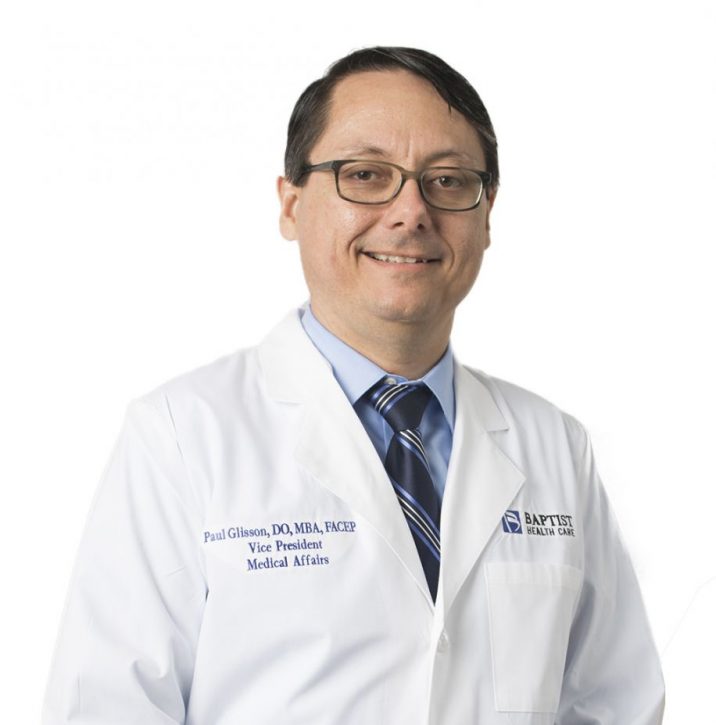
Paul Glisson, D.O.
Vice President and Chief Medical Officer
Baptist Health Care
Currently serving as the Vice President of Medical Affairs and the Chief Medical Officer for Baptist Health Care, Dr. Glisson acts as a liaison between the medical staff and the administration of the hospital to ensure that both teams can function effectively. He also serves as a clinical consultant for making administrative decisions on how to deploy healthcare throughout the system.
“On March 16, according to the numbers, we were on a path to destruction. We were headed towards doomsday—417 patients with 50 or so patients on a ventilator. Based on that, my next job was to look at the possibilities and help make a surge plan that had five stages,” said Dr. Glisson. “I sat down with a team of amazing leaders here at Baptist and said, ‘How do we figure out how to bed 600 people at the hospital? What do you do when the needs of the healthcare in the city exceeds the capabilities of the healthcare facilities?’”
As Dr. Glisson explained, stage zero was planning— at the time they had no COVID patients. Stage one would be they had 0-10 patients. Stage two is when they exceeded 10-50 patients. Stage three would be if they exceeded one floor of the hospital. Stage four would be when the ICU exceeded the capability to take care of ventilated patients, leading them to grow the ICU elsewhere. Stage five would involve thinking outside the box and using the ambulatory surgery centers, including the Naval Hospital.
“Our saying here is Earth 1.0 and Earth 2.0. In Earth 2.0, all the rules have changed. Tele-medicine has advanced 20 years overnight based on CMS guidelines and how we now view medicine,” Dr. Glisson said. “You don’t have to put your sick relative in a wheelchair and get them to the doctor just to get their medicine refilled. So, I think medicine has evolved, and I hope those good changes continue.”
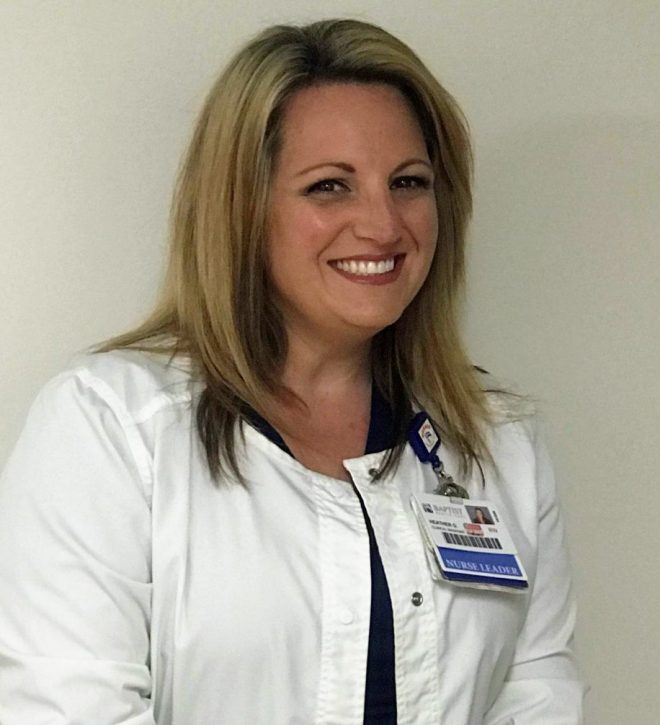
Heather Olmstead, BSN, RN
Clinical Manager
Baptist Hospital Emergency Trauma Center Department
Heather Olmstead has been a nurse for 15 years. After she got her RN, she started at the critical care unit at Baptist, then worked at another ICU for eight years. She came back to Baptist as an emergency department nurse in 2012 and is now the clinical manager for the Baptist emergency department.
“All of the staff report to me, and I help with making clinical decisions and making sure the staff are educated appropriately. I make schedules and work with the community—it’s a lot of different aspects,” “I came from a long family of nurses. My mom, my sister, my aunts and my uncles were nurses, so that’s kind of what drew me to this profession,” Olmstead said. “They worked for Baptist, so Baptist is like a home. It really is. Especially at a time like this, it’s rewarding to be able to provide comfort to people at such a scary moment in their life. With family not being able to visit, we really become their person to help them and support them to get them through this. It really has reminded me why I became a nurse.”
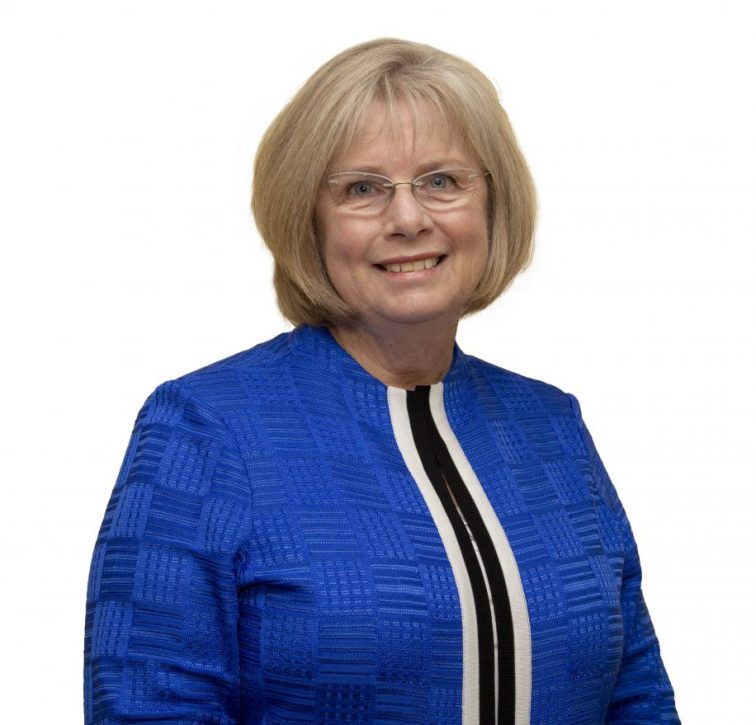
Laurie Veve, MSN RN-BC
Director of Inpatient Nursing
Baptist Hospital
Laurie Veve has been a nurse for 44 years and has been with Baptist since 2008. She is currently the Director of Inpatient Nursing, which means that all acute care units are under her purview and report up to her including the med-surg units, OB surgical units and neuro units. Veve took the time to explain a day in the life of a nurse treating COVID-19 patients.
“We work 12-hour shifts. The nurses receive report at the bedside. The thing that’s different here is the level of PPE they wear, which is designated specially for this virus. They wear a gown, gloves, masks, face shield and everything at the bedside reporting with the patient,” Veve explained. “From then on, it’s just management of the patient and his or her symptoms and their care—medicating as appropriate, making sure they remain comfortable, monitoring them for any changes in condition and collaborating with the physician and the care team as to the next steps for the patient. We rely on the expertise of our nurses to recognize those subtle changes that are pointing towards, perhaps, a worsening condition that we need to act on quickly.”
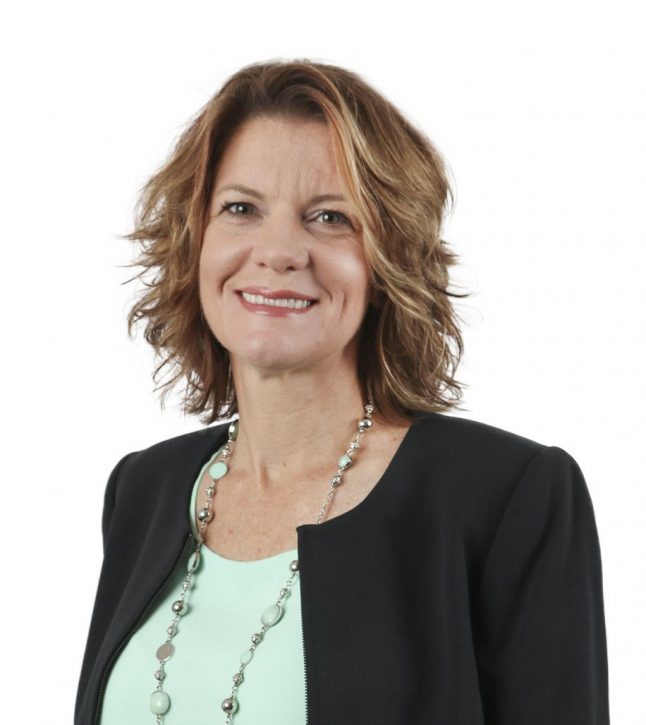
Lisa Lavoie DHSc, MPH, RN, CIC, CPPS
Corporate Director, Clinical Excellence
Baptist Health Care
Lisa Lavoie has been with Baptist Health Care since 2010. She started as an infection preventionist and subsequently became an infection prevention manager and then director. Her current oversight includes not only infection prevention but also public reporting of core measures, the stroke program and the sepsis program.
Lavoie explained the procedures for potentially exposed employees. “Whenever a team member is potentially exposed, we interview the team member to find out what level of exposure they had and find out if they had their gown, gloves, mask and eye protection on at the time of incident. Sometimes its low exposure like being in a hallway when a patient is wheeled past. If it’s a high exposure, those team members are asked to stay at home and not come to work for 14 days from their last exposure,” Lavoie said.
She also dispelled some myths about PPE: “I want to help people understand that those cloth and surgical masks do a great job of keeping your germs to yourself. So, whenever you wear a mask, it means that if you happen to cough it’s not going to get on the things around you. It also helps to keep you from touching your nose and mouth, which we know is one of the ways this disease spreads. But it’s not protecting against respiratory infection— it doesn’t help you to not breathe something in,” Lavoie said. “In contrast, an N95 mask that hospital workers use when working directly with potentially contagious patients is really a respirator to protect them from breathing in the virus.”
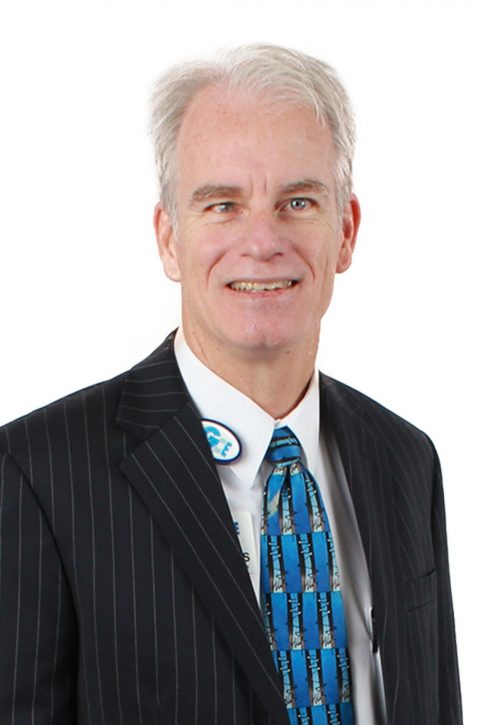
Russ Schreiner
Senior Operations Executive
Global Connections to Employment
Russ Schreiner has been working at Global Connections to Employment (GCE), a division of Lakeview Center for around 32 years. Lakeview Center is an affiliate of Baptist Health Care. His job at GCE is to provide jobs for people with disabilities using different lines of business such as environmental services, food services, mail services, as well as I.T. work to employ wounded warriors. In addition to a team of 87 people on the frontline cleaning rooms at Gulf Breeze Hospital, Schreiner has been coordinating a route for mask sterilization for Baptist Health Care.
“One of the support service team leaders at the hospital, John Porter, started using a technique that was developed by the University of Nebraska to use ultraviolet light to sanitize the masks,” Schreiner explained. What they needed was a process to get masks from the Gulf Breeze Hospital so that they could be used multiple times. So, we got a van from Lakeview and started a route.”.
Twice a day, they pick up masks from different places around town and take them over to Baptist, wait for them to be cleaned and take them back. “Of course, the people that have the masks feel like they are giving up their wallets and want to make sure they get them back. So, they were a little nervous about just dropping them off,” Schreiner said “So, they put their name on them, they go in a labeled dirty bag—once sterilized they’re put in a clean bag and delivered to the employee for their next shift. The sterilization involves what looks like a clothesline. They hang the masks and then they hit them for 30 minutes with high intensity ultraviolet light from both sides.” .
Jenny Paige Ford MS-CLS, MLS(ASCP)
Laboratory Quality Assurance and Compliance Specialist
Ascension Medical Group Sacred Heart
Jenny Ford has been with Ascension Medical Group Sacred Heart for around 10 years working as a medical laboratory scientist. She received her master’s degree in clinical laboratory science from Rutgers University in New Jersey. In her current position, she reviews laboratory policies and assures the quality of tests analyzed in the labs; she also manages labs outside the hospital in urgent care centers and clinics to make sure the labs are accurate and everything is documented properly. Ford was instrumental in creating the drive-through COVID-19 testing site at Sacred Heart Hospital.
“Part of my job is to act as a liaison for all of the labs in our area and throughout the country. I got a call from one of my contacts at Quest Diagnostics and they had started doing COVID-19 testing. At that time, they were only doing testing at the Department of Health and their staff was very limited,” Ford explained. “I knew had to do something for our patients because they were scared, and they want to be tested. We just had to find a safe way that wasn’t going to expose our entire Airport Medical Park to the virus.”
As Ford explained, the goal was to create a balance between keeping employee exposure minimum while keeping patients safe, yet still making testing convenient for them. While they had a lab to run the tests, they still needed to create a safe collection system—the drive-through.
“We have a check point where we record your name and date of birth, and we verify that you called the pre-screen number and that you’re good to be tested. Then you drive around and get your labels and biohazard bag. From there, you go straight up to the test collection center and we re-verify all patient info and perform the swab through the car window,” Ford explained. “The swab goes deep—people say it feels almost like it’s touching your brain. That’s because the virus lives in what we call the nasopharyngeal spot in your sinuses—it’s basically where your throat and nasal cavity meets, so that’s why it feels like it’s going so deep.”
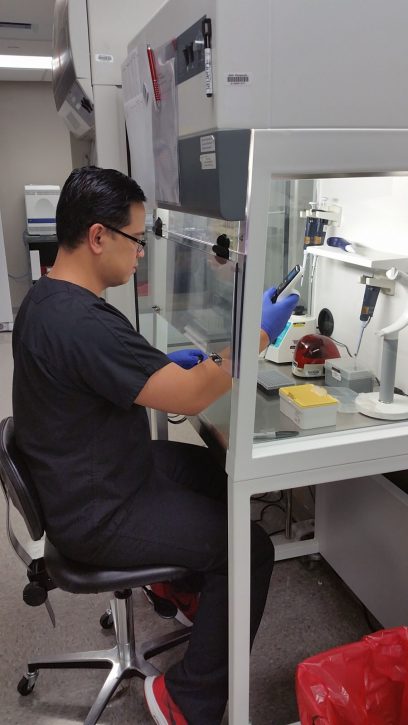
Jim Alberto, Medical Lab Scientist
Ascension Medical Group Sacred Heart
Jim Alberto attended the University of West Florida for clinical lab sciences. He graduated from the university in 2009 and completed his clinicals at Sacred Heart Hospital. He has been working for Sacred Heart for 11 years in the microbiology lab. Alberto explained that he handles specimens from the human body that include infections, bacteria, viruses and parasites. Once they identify the sample, they test it with a panel of drugs to see which drug will work for that specific strain. Starting on March 20, the lab switched gears and focused its efforts on COVID-19 testing.
With only four people trained in the lab for running COVID-19 tests, each rotating shifts, Alberto explained that they can test around 200 COVID-19 samples a day. His lab serves Mobile, AL to Jacksonville, FL.
“Most people don’t know that my team exists, the lab that is, they assume the doctors and nurses they talk to are running these tests when its actually the lab personnel,” Alberto said. “Right now, we are able to perform about 200 tests a day, but those are only inpatient tests and ‘people under investigation’ tests. We are still sending tests to outside labs, but soon we’re hoping to get enough people trained to run all of our tests here, which would be around 1,000 tests a day.”
Alberto also explained the benefit of getting patients results in a 24-hour period rather than 10-days or longer, which has been reported by several labs in Florida. “It means the difference between level of PPE supplies utilized in treatment and also the difference in severity of treatment,” Alberto said. If an inpatient is positive, the providers must use all PPE equipment required by the CDC when in contact with the patient. But, if that patient is negative, they don’t need to use as much PPE, because the patient is probably sick from something else other than COVID-19. Getting results quickly also impacts the kind of treatment patients receive.”
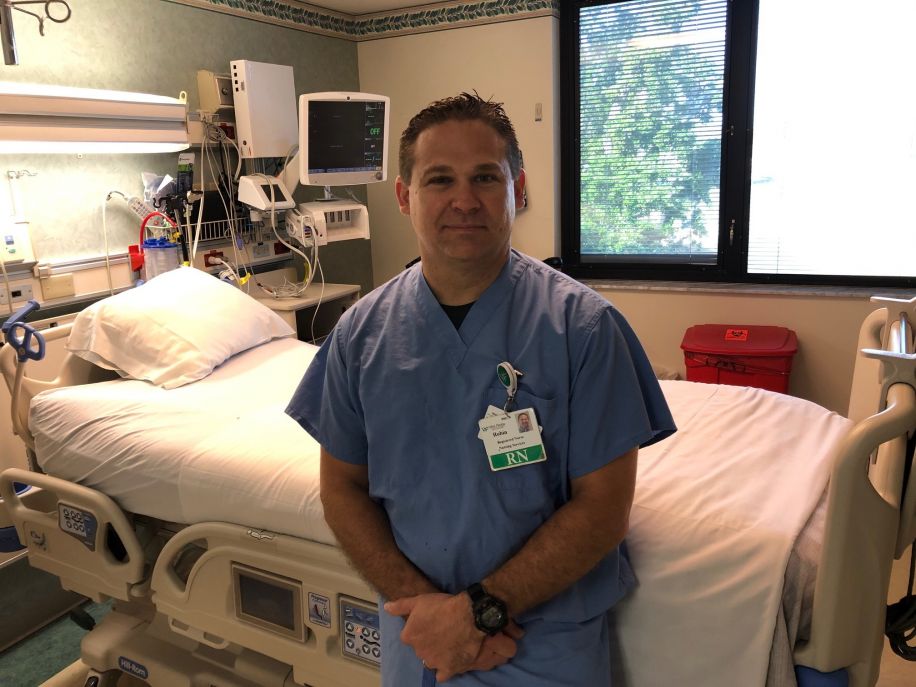
Robin Armstrong, RN
West Florida Hospital Intensive Care Unit
Robin Armstrong has been a nurse for a little over 12 years with the majority of his time spent in an ICU setting. Armstrong explained that within the ICU, he cares for critically ill patients, which have a wide spectrum of illnesses. The ICU is divided between two units: one is an open-heart area for surgical patients and the other is where medically sick patients are accepted. West Florida ICU has turned the medical portion into a quarantine unit for COVID patients.
“It’s a unit where we have the closed doors and we have specialized equipment inside. We have isolation rooms. We have negative pressure rooms where we can care for those patients who have airborne infections,” said Armstrong. “Since COVID-19 has really come to the forefront, I’ve spent most of my time in that unit. We’re doing everything we can in order help the patients get better and to make sure that we don’t harm each other or the community at large by spreading the virus.”
Just like others, Armstrong uses a change of clothing between work and home, showers using an outside shower and leaves his shoes in the garage.
“I realized through the townhall meetings and medical community coordination that we were we were coming together as a community and the community was working very effectively. That was a good perspective for me,” Armstrong said. “Not only did it reassure me, but it gave me hope that not only does Pensacola have a plan, but it’s a good one and we are being proactive instead of reactive.”